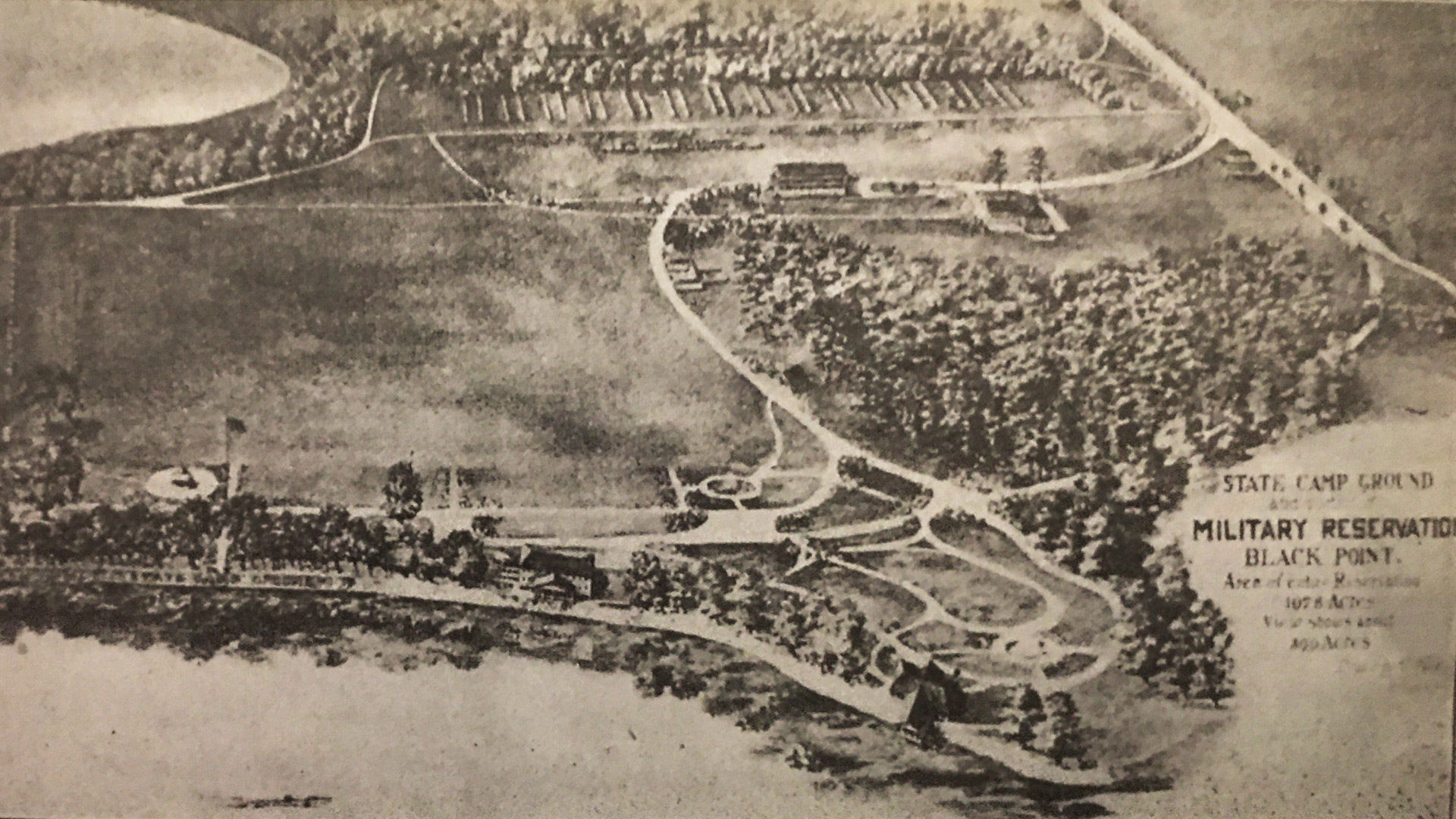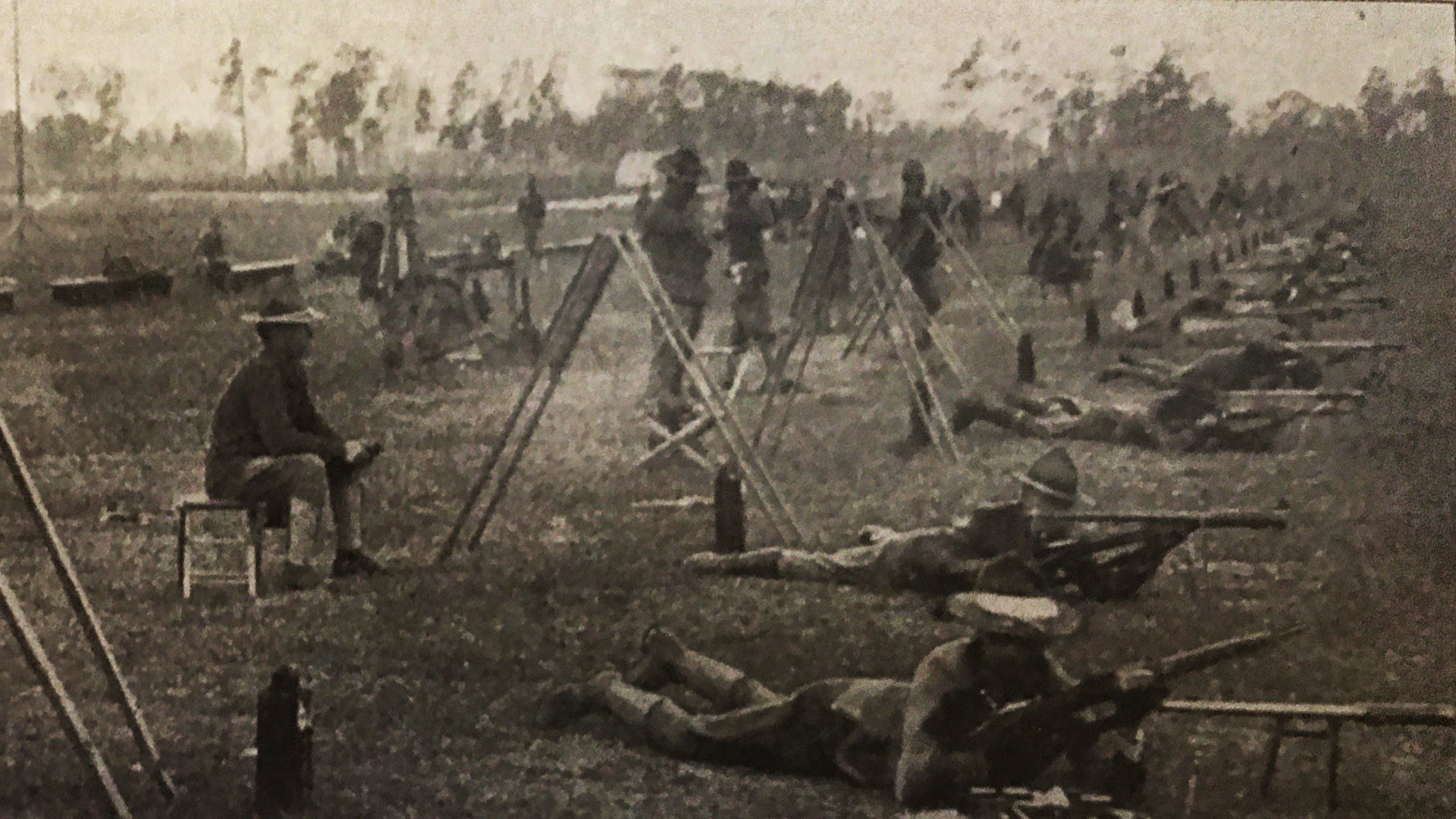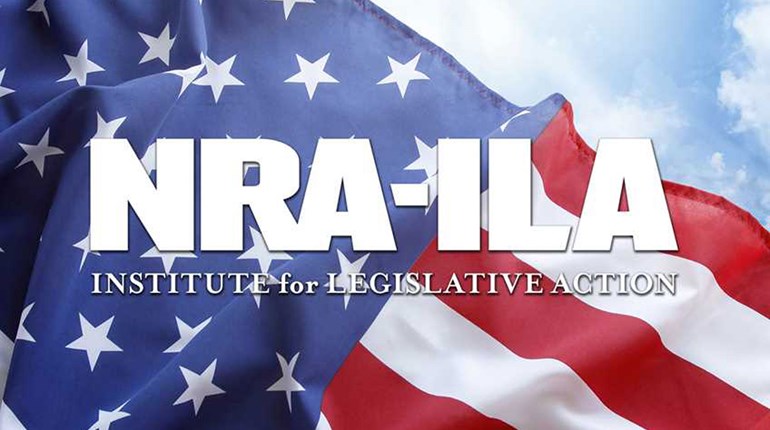
“If there is one feature of the Florida matches which lacked the old vigor and go of Camp Perry it was Commercial Row. Whether the location was not suitable, and most of the occupants claimed that this was owing to its distance from camp, Commercial Row was more or less a failure, especially financially.”
—Arms and the Man, October 1915
The National Board for the Promotion of Rifle Practice chose Jacksonville's new state range as the National Match site this year. The announcement was made at the Board's January meeting, held immediately after the NRA's Annual Meeting where Gen. Ammon Critchfield had offered the use of Camp Perry for the matches. The year prior, Florida's Adjutant General, J. Clifford Foster, who oversaw construction of his state's facility, led an impressive effort as Executive Officer of the National Divisional Matches at Jacksonville. Foster was also a member of the NRA's Executive Committee which made him especially cognizant of the need for sufficient and desirable ranges to conduct National Matches open to the entire country. The selection of Jacksonville was no doubt part of a plan whereby match officials wanted to encourage and reward state range development. What better way to do so than with National Match recognition?

The Florida state campground and rifle range sat eight miles from Jacksonville on the banks of the St. John's river and was accessible to the Atlantic Coast Line Railroad. The facility comprised roughly 1,100 acres, with about 110 designated for the range, which was equipped with 150 targets and surrounded by a scenic display of oaks, magnolias and pines.
"This range differs in one respect from both Camp Perry and Sea Girt," reported Arms and the Man. "The targets are silhouetted against green trees and it is much easier on the eyes than the skyline of the two latter. Not only the vista in the rear of the targets but the entire range itself, is clothed in a mantle of green which is most restful."
Other range details included a signal and telephone system and an ample well-water supply piped throughout the grounds. Target butts were walled with creosoted timber to reinforce the earth embankments and firing points were sodded with Bermuda grass.

The pattern of erratic weather established during earlier National Matches at Camp Perry also impacted competitors and match schedules to varying degrees in Jacksonville's southern setting. The Florida climate, like the foliage, was in marked contrast to what most shooters with National Match backgrounds were accustomed to and featured frequent rainstorms with doses of humidity, high temperatures, winds and swamp-like conditions thrown in the mix. Besides affecting schedules, firing conditions and scores, the weather kept the camp quartermaster busy with tent repair as it was reported that support pegs regularly gave way from wind and soft ground.
It was under challenging conditions of wind and rain that the NRA portion of the National Matches began on October 8 with the firing for the Leech Cup. This year marked the first time the contest allowed telescopic sights on service rifles, though reports indicate the use of just a few among the 336 entries. The title went to Cavalry Sgt. J.M. Thomas who was one of only two to fire a possible at 1,000 yards. Victories in the Wimbledon Cup and President's Match went to Sgt. J.E. Jackson of Iowa and Marine Sgt. A. Hagen, respectively.
A noticeably higher number of teams were on hand at the start of the NRA contests, most probably due to a new condition this year that allowed free range use prior to the National Matches. This provision succeeded in its aim to boost overall attendance as sporadic team arrivals leading up to the Board Matches was common practice in prior years. An Infantry regiment from the Texas border was sent to Jacksonville to work the matches, and Col. Richard M. Blatchford served as Executive Officer of the events, while NRA President Col. William Libbey led the team of NRA officials on hand.
The National Individual Match signaled the start of the Board phase on October 18. Sgt. J.S. Stewart of Massachusetts finished atop the field of 756 entries. The class breakdowns for the National Team Match were determined by the standings from the 1913 National Matches at Camp Perry and when scores from the 44 teams were compiled, they represented the closest finish in National Match history, as the Infantry edged the Marines by four points in a contest that featured changes in conditions and courses of fire.

This year, there was no standing position as rules called for rapid fire at 200 (kneeling from standing) and 300 (prone from standing) yards, followed by slow fire at 300, 600 (with sandbag rest) and 1,000 yards; with 15 shots per stage instead of 10 and no sighters for the latter. The National Pistol Match, which featured slow fire shooting at 50 yards in addition to 75 yards, plus the timed and rapid-fire stages, was won by Lt. J.D. Garland of the Indiana Infantry, and marked the end of the Jacksonville tournament.
“There are already quite a number of ladies domiciled at camp; the camp for the married officers is, as usual named the ‘Squaw Camp.’ The lay-out of the range is exceptionally convenient in every way. The row of administration tents is in the rear of the firing point about 100 yards from the range... Beginning almost at the 1,000-yard firing point, the team streets run in a semi-circular direction to the rear. At the end of each street is a kitchen and mess hall. On the river bank and about three quarters of a mile from the firing line is the new clubhouse. The campgrounds are liberally supplied with latrines and shower baths... There is no depot on the grounds but the trains of the Atlantic Coast Line come up behind the firing points to the quartermaster building... Across the track there is a restaurant, supplying meals at 50 cents each, a telegraph, express office and Commercial Row.”
—Arms and the Man, 1915

Lead photo: “Let us all go to Florida in 1915 and show the South…that we appreciate what has been done in the construction of this great Southern range,” said the January 1915 issue of Arms and the Man.
Read more: One Escape: Camp Perry Held 6,000 POWs


































